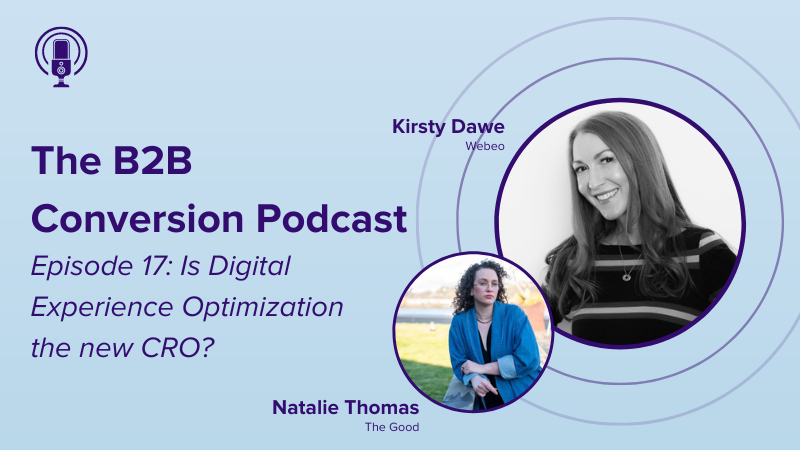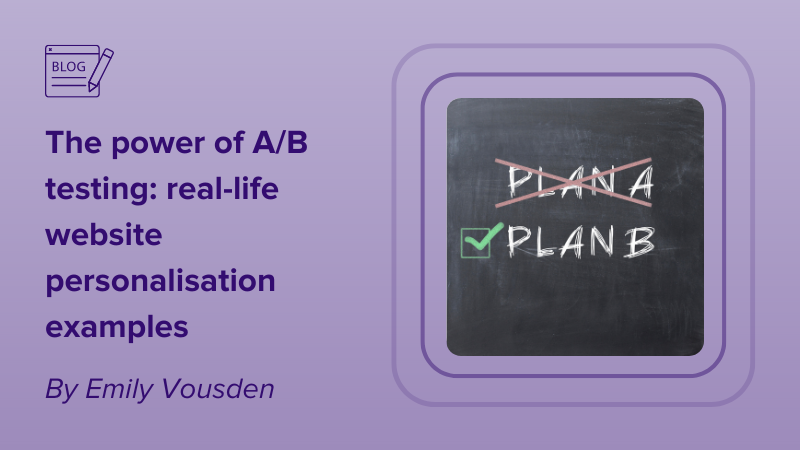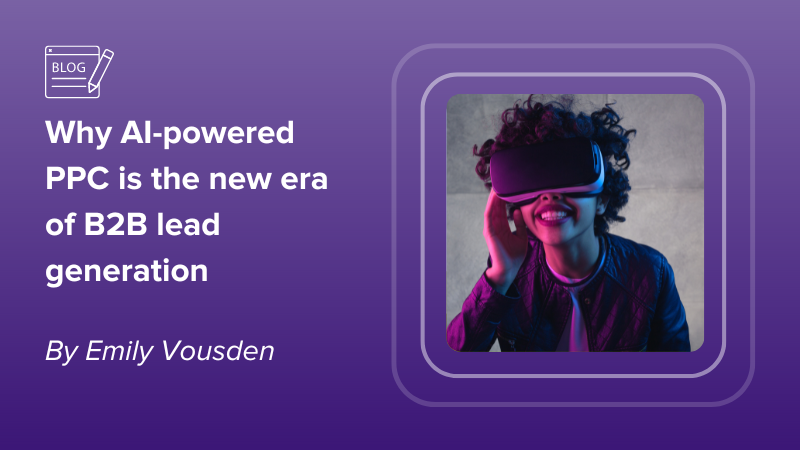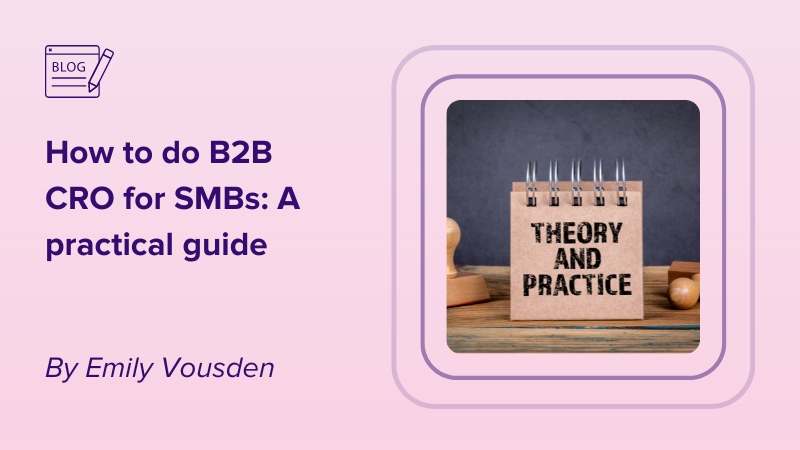Marketers have long known that personalizing content, to make it more relevant and engaging to their audience increases conversions and helps build relationships. In fact, Salesforce reported 84% of consumers say being treated like a person, not a number, is very important to winning their business.
With consumer-focused businesses leading the charge on personalization (think Amazon – they started doing this WAYYYY back in 1999), the original technologies to help marketers personalize content to their audience, have been very much B2C focused. Even now in 2023 many providers have simply taken a B2C solution and adapted it for the B2B market.
But B2B personalization doesn’t have to be a thing of dreams. In reality, there are tons of ways to use personalization in the B2B space and the best place to start is the website – it is after all the shop window that defines a brand experience. With 67% of the B2B buyers journey starting online, plus Gartner stating B2B sales organizations must deliver a seller-assisted digital buying experience in order to succeed in today’s digital-first environment; if you aren’t currently using B2B website personalization to your advantage, then there’s no time like the present to start.
Let’s start at the beginning and define what actually is website personalization…
Website personalization is the ability to create tailored, dynamic, relevant experiences for website visitors. Meeting a website visitor’s specific needs on the homepage and other key pages, from the moment they land on the website. Ultimately presenting the right content, at the right time to the right person.
You might be wondering why B2B website personalization is so important? It’s all about the B2B buying cycle: it takes longer than a B2C journey, includes more research and often prospects don’t reach out to a business until they are ready to buy.
Gartner states the average B2B buying cycle takes six to twelve months, between 11 and 20 people are involved in B2B purchase decisions and B2B buyers spend just 17% of the buying cycle time meeting with potential suppliers. The crux of the matter is, the rest of the time is spent researching online and meeting with their buying group. Subsequently, delivering highly relevant, targeted content to B2B decision makers and buyers, makes it easier for them to find the information they are looking for and increases conversion rates.
So, are we ready for B2B website personalization?
Absolutely we are! In the past B2B marketers were left behind by their B2C counterparts, often approaching activity differently because it’s aimed at a business rather than an individual. And whilst there are of course differences when it comes to best practice for B2B marketing, the reality is B2B organizations are still run by people and those people are very familiar with being personalized to (and they prefer it!) So, they want a piece of that action on the B2B side too. The great news is, Webeo, our B2B website personalization software, is specifically designed and built for B2B organizations.
Through Webeo, many B2B companies are already implementing a tailored experience to their website visitors and seeing some huge results. For example, software company Turbonomics have increased their website conversion by 395%, analytics firm Mintec have increased their website conversion by 1202% and Redstor who specialize in IT, have increased their conversion by 478%. All from implementing website personalization.
Want to know how you can get started?
As always, the best place to start is at the beginning. Common concerns when it comes to starting the website personalization journey are:
- I don’t have enough content
- How will I know which content to personalize?
- What should the copy even say?
- I don’t have the resource right now or a project team to ensure it’s all mapped out and ready to go
But, you only need to start small. Little changes that make content relevant to the audience doesn’t have to require lots of content and a complicated journey map. The plan is always start small and build out from there.
Here’s 3 easy steps to help you on your way…
Step 1 – Industry-based personalization
Lots of Webeo’s customers start out with an industry-based personalization, where they use our IP data to tailor the on-site content, based on the industry the website visitor comes from. This enables them to ensure relevant, sector applicable content is served, ensuring the buyers know they are in the right place. Many Webeo customers serve a range of industries with their solutions, and they cite the main benefit of industry-based personalization, is they can target these sectors with relevant content that demonstrates they are experts in that space.
Remember this doesn’t have to be complicated, here are three quick wins to get you started with industry-based personalization:
Step 1. Place a dynamic ‘industry’ tag in the Homepage headline (this pulls the industry through of your website visitors business). The big plus? You don’t need to set up multiple experiences for all the industries you serve.
Step 2. For your ICP (Ideal Customer Profile) industries, add relevant client logos to the pages of your website you consider high intent. Website visitors from these industries will see the clients you’re working with from their sector when they visit those pages and will know you’re an expert in their space.
Step 3. Plus, you can showcase and reference case studies detailing how you’ve helped businesses in your visitor’s industry, again ensuring they have instant visibility that you’re the supplier for them.
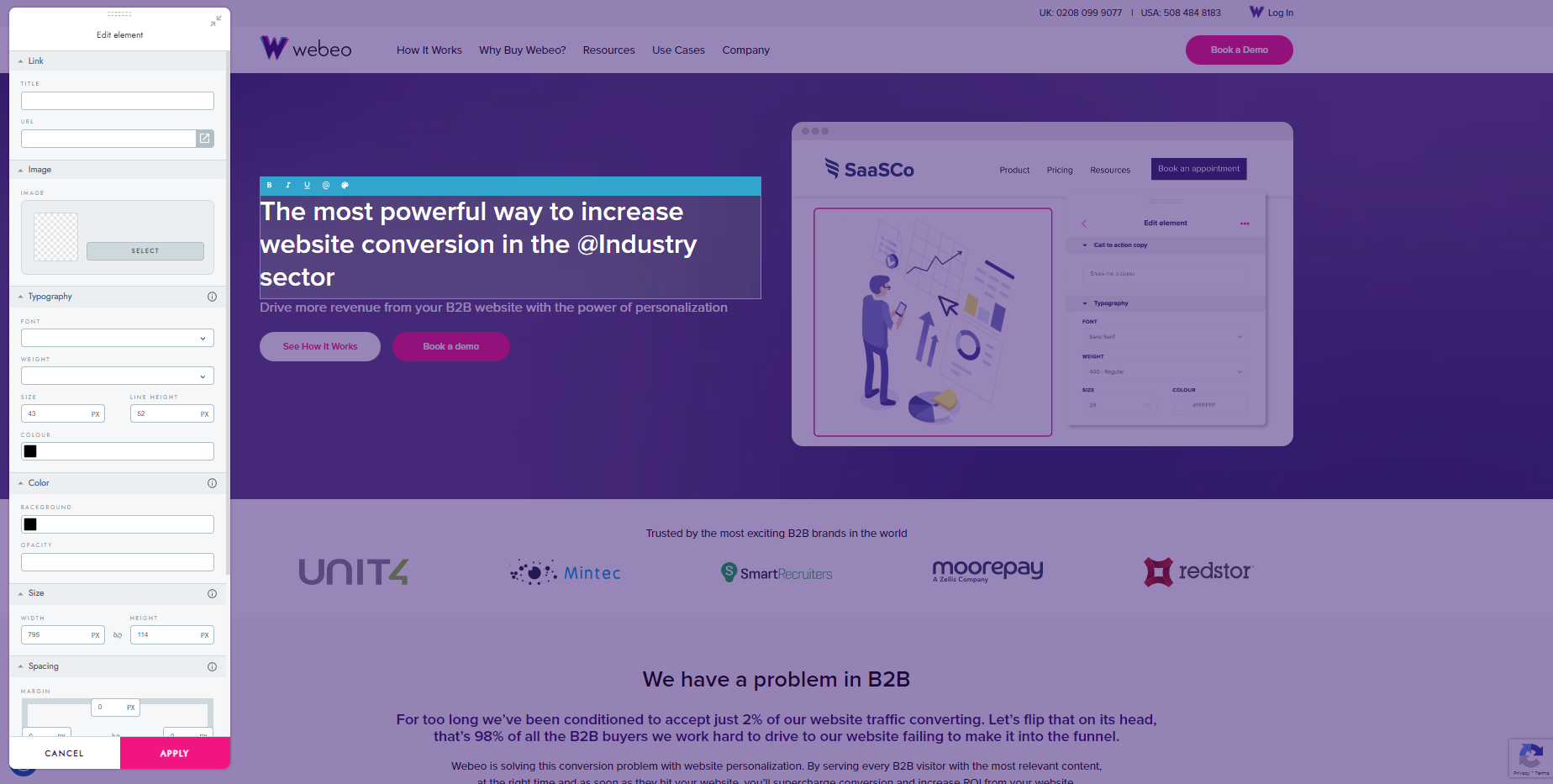

Industry based personalization
Step 2 – Location-based personalization
Many of our customers are global organizations and have businesses from multiple countries or locations visiting their websites. Webeo customers are utilizing our location-based personalization feature to ensure that the information and copy presented to their visitors is relevant and accurate. Website visitors need to know they are in the right place and this business can provide them with the solution they are looking for. Website personalization enables them to do that and decreases website visitor dwell time, whilst increasing page views and likelihood to convert.
Here’s 3 quick suggestions for location-based personalization:
Step 1: Personalize copy regarding your product, allowing it to mirror the products and services available in the website visitor’s region or country.
Step 2: Update the website copy to imitate your website visitors’ local language. A number of our customers’ report creating subtle personalization’s to address the difference between American and British English, has been very impactful.
Step 3: Refresh call to actions from a regular ‘Contact us’ to including your website visitor’s local rep based in their area. These personal touches make all the difference.
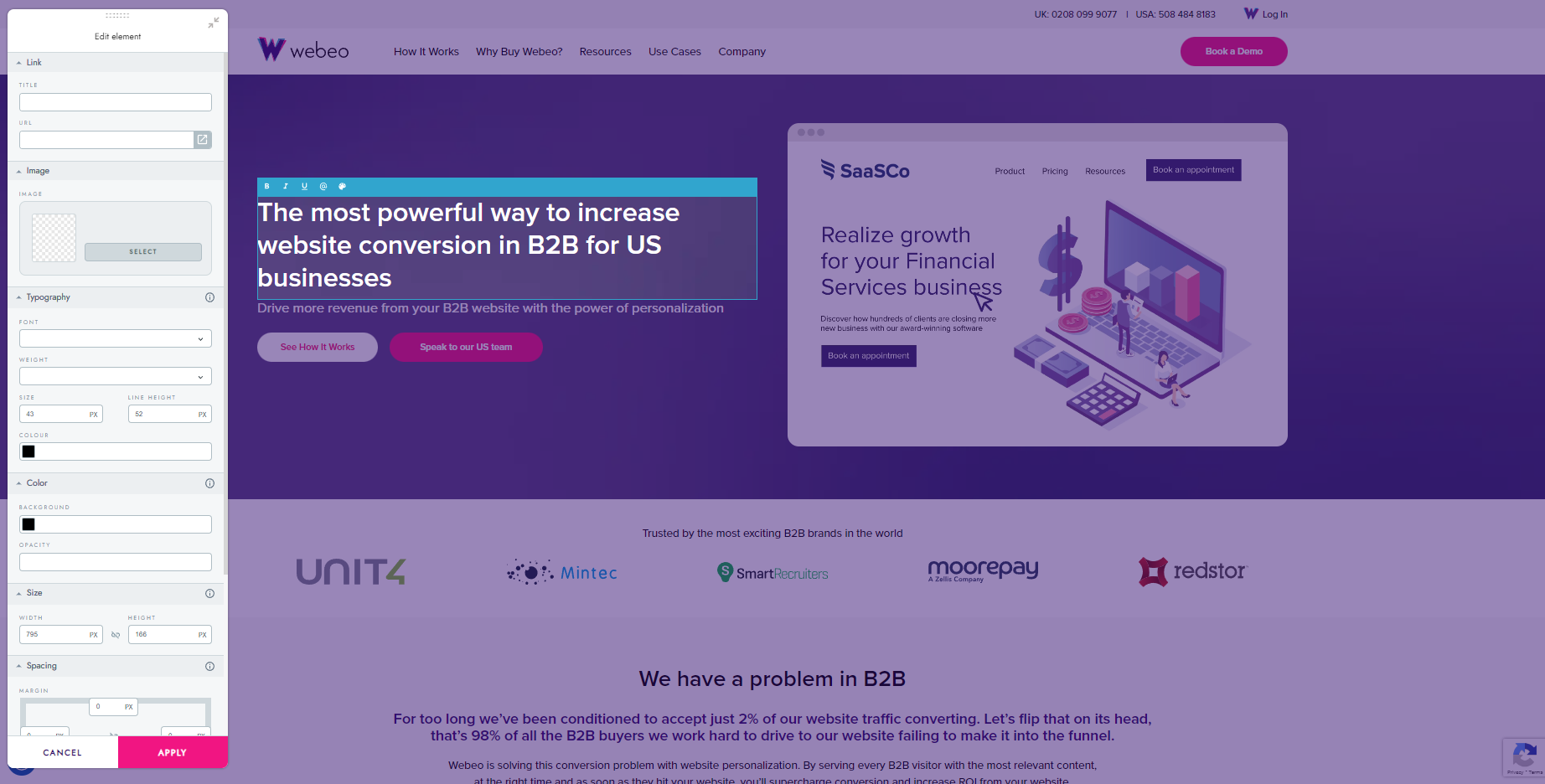

location based personalization
Step 3 – Behavioral-based personalization
One of Webeo’s latest features, behavioral-based personalization, allows you to build campaigns on your website that tailor content, based on the actions your website visitors took during their previous visits. Keeping it simple to start with can mean serving a basic ‘Welcome back’ message when a visitor returns to your website. You can create varying call to actions and present a range of content, depending on what they previously interacted with.
Here’s three simple returning visitor suggestions to get you started:
Step 1: A simple ‘Hey you’re back’ or ‘Welcome back’ personalization, when a website visitor returns to your site. This allows you to recognize they’ve been to your website before and makes your visitor feel welcome.
Step 2: Another great way to use behavioral personalization is to tailor the content on your homepage banner to something like ‘Here’s another case study you might find useful’ if a visitor looked at a case study last time they visited your website.
Step 3: You could say ‘Check out this ROI calculator’ if a website visitor booked a demo on their last visit.
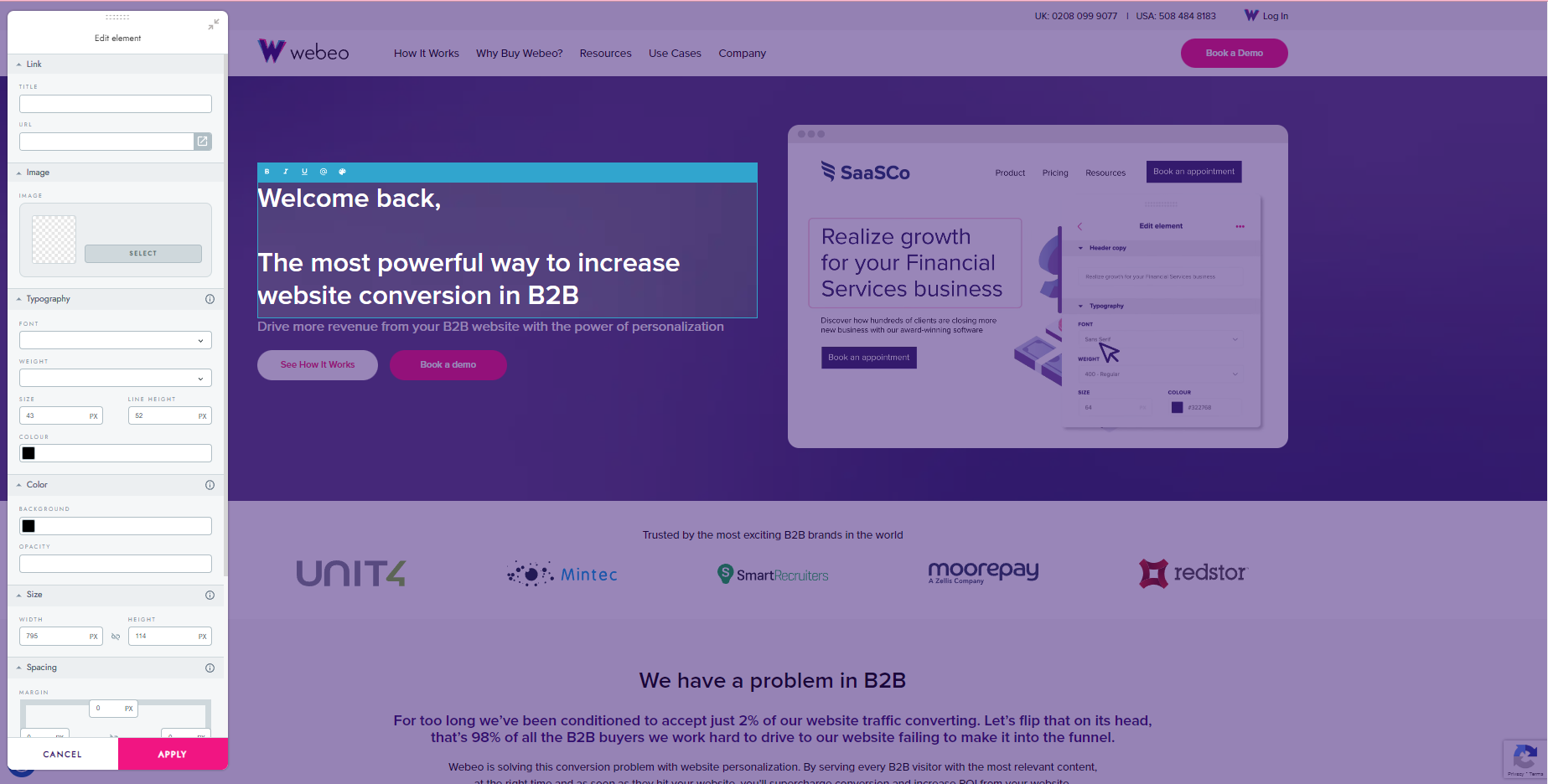

behavioral based personalization
With so many ways to personalize your B2B website, there’s no time like the present to get started. As Salesforce said, consumers just want to be treated like a person, not a number and that doesn’t exclude B2B marketers. Helping your website visitors find the right content, at the right time will not only simplify the buying journey for them, but will increases your conversion rates.
B2B website personalization success isn’t complicated, let us show you how simple it is with Webeo.

